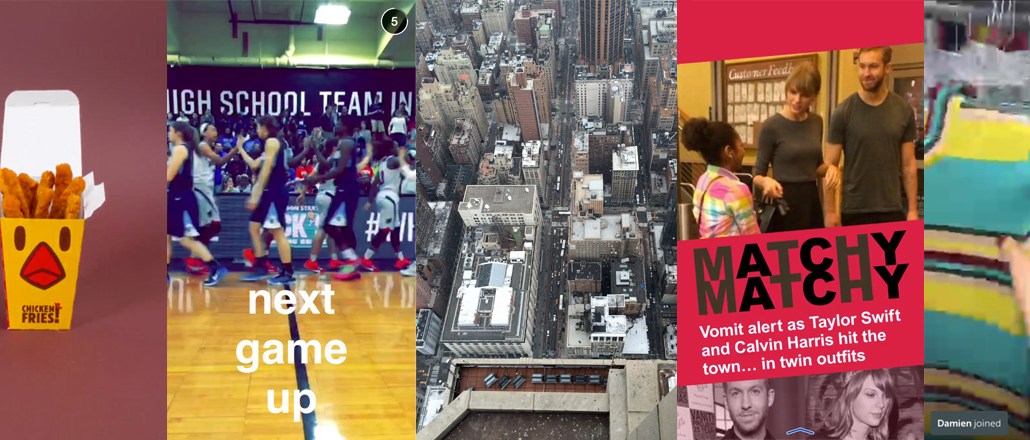
Vertical video has become ubiquitous in the world of apps and social media. Now, it’s bringing a new shape to ads as well: Hearst last week launched a new full-screen, vertical video ad on its mobile websites.
Hearst is serving the new vertical video format to its mobile sites through direct deals with brands, and it’s delivering them through its Media OS platform, according to Todd Haskell, chief revenue officer at Hearst Magazines Digital Media. The vertical video ads are available on all Hearst sites, but they’re in highest demand on those with younger audiences, like Cosmo, Elle, Seventeen, Marie Claire, he said.
Hearst is no stranger to vertical video. The magazine publisher runs a couple channels on Snapchat, where vertical video is the standard unit. On desktop, Hearst’s half-page vertical ads have become a more powerful format than the old-fashioned skyscraper slots that used to dominate. Theoretically, advertisers could repurpose Snapchat ad creative to run on Hearst mobile sites, although none have done so yet.
“We’ve seen really remarkable performance on mobile when we produce experiences using a vertical video approach,” said Haskell. “We are working on creating products that take the vertical video expertise we have, create content using vertical video and actually put it on our sites.”
Hearst runs two channels with Snapchat, one for Cosmopolitan and another called Sweet, which was built specifically for the app. Hearst has done vertical ads with brands like L’Oréal on its Snapchat channels and can now offer the ability to run that creative on its own mobile sites.
The first vertical video ad to run on Hearst sites was one from Ralph Lauren. It did not appear on Hearst’s Snapchat channels. The publisher has an in-house creative services team that helps brands and agencies build the vertical ads, and other formats, to run on Hearst sites and outside places like Snapchat. Hearst did not say how big its creative team is.
What was once an experimental format, and an often-hated one by widescreen purists, vertical video is becoming respectable. And it’s migrated away from just Snapchat, Twitter and Facebook, where ad units are becoming more and more vertical.
The vertical video — and other multimedia formats — are helping raise the quality and price of ads on mobile, according to Eric Franchi, co-founder of mobile ad company Undertone, which was recently bought by ad tech firm Perion. Undertone specializes in full-screen vertical mobile ads that employ multimedia creative.
“For publishers, the reality is that they need to monetize the mobile Web – that’s where the majority of their traffic is going, often via social – and interstitials do it well and with higher [prices] than standard banners,” Franchi said.
Multimedia and video interstitials can cost more than $10 for 1,000 views, Franchi said. The typical, non-full-screen mobile video ad can generate as little as $5 for 1,000 views.
Vertical ads aren’t just for mobile either. For a few years now, the Interactive Advertising Bureau has pushed the half-page vertical ad on desktop sites — it’s one of the “rising stars” formats. The dimensions make it twice as wide as the older “skyscraper” vertical units.
There are no official stats on whether the half-page vertical ad on desktop is getting more use, but publishers like Hearst say it is indeed more engaging and in higher demand than some other formats.
Brands aren’t using their vertical video creative from mobile for ads on Hearst desktop sites, but they are running multimedia ads in the half-page slot.
The 300 x 600-pixel ad performs in a “materially better manner” than other formats, and gives clients the best possible results, Haskell said.
More in Media

Publishers are hunting for AI prompt data — now they’re starting to get it from third-party companies
Publishers are finally gaining some visibility into AI search, as new prompt data tools crack open a black box.

Digiday+ Research: Publishers’ growing focus on video doesn’t translate to social platforms
Major publishers have made recent investments in vertical video, but that shift is not carrying over to social media platforms.

Technology x humanity: A conversation with Dayforce’s Amy Capellanti-Wolf
Capellanti-Wolf shared insight on everything from navigating AI adoption and combating burnout to rethinking talent strategies.





